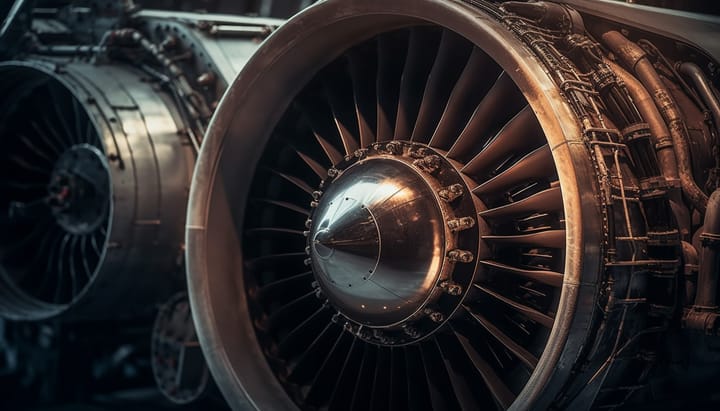UAVs soar, pilot shortages shake flights, airlines launch long‑range jets

TL;DR
- Autonomous aircraft ascend: China’s GJ‑X stealth drone and US Shield AI’s X‑BAT showcase advanced UAV capabilities.
- Runway collision risk heightened: Nice Côte d’Azur incident mirrors earlier near‑misses involving A320s worldwide, prompting re‑review of air‑traffic procedures.
- Crew shortages strain airlines: Delays and cancellations rise as pilot supply gaps widen across global carriers, prompting regulatory scrutiny.
- American Airlines’ first A321 XLR flight demonstrates extended‑range efficiency for trans‑continental travel.
China’s GJ‑X vs. US AI‑Enabled UAVs: A Diverging Path in Autonomous Air Power
China’s High‑Performance Stealth UCAV
- Airframe: 42 m wingspan, tailless flying‑wing (GJ‑X)
- Range: > 7 000 km (estimated)
- Endurance: 15–20 h
- Payload: 2–4 t (strike/ISR)
- Status: Prototype observed at Malan Air Base, Xinjiang; semi‑operational GJ‑11 at Shigatse, Tibet
- Strategic Intent: Extend PLA‑AF A2/AD envelope in the Indo‑Pacific and challenge US air superiority
US AI‑Centric UAV Evolution
- AI‑Enhanced Airspace Awareness: DroneSentry‑C2 Enterprise, ADS‑B integration, AI threat prioritization (30‑40 % SaaS revenue forecast 2025)
- Low‑Cost Long‑Range Strike: Artemis prototype, 40 lb payload, up to 1 000 mi range, unit cost < $100 k
- Autonomous Mine‑Clearing UGV: RACER platform, 12‑ton tracked vehicle, 100 m lane clearance
Comparative Capability Snapshot
- Range: GJ‑X > 7 000 km vs. Artemis ≤ 1 600 km
- Payload: GJ‑X 2–4 t vs. Artemis ≈ 18 kg
- Stealth: Flying‑wing low observable vs. conventional airframe
- Autonomy: Pilot‑less, limited AI vs. AI‑guided terminal guidance
- Cost per Unit: Undisclosed, likely high vs. <$100 k
Emerging Trends and Outlook
- Endurance climbs above 15 h for both platforms, indicating propulsion efficiency gains expected within the next year.
- AI integration functions as a force multiplier; DroneSentry‑C2 and Artemis illustrate a trajectory toward fully autonomous combat UAVs, with X‑BAT prototypes projected for early 2026.
- Strategic divergence persists: China invests in deep‑strike, high‑payload stealth UCAVs, while the US pursues modular, AI‑enabled low‑cost strike drones for rapid theater deployment.
- Continued monitoring of satellite imagery, open‑source footage, and AI‑tracking disclosures will be essential to validate these trajectories.
Pilot Shortages Threaten Airline Growth Despite Record Profits
The Aging Cockpit
Over the next 15 years, 42 000 pilots in the United States will reach the mandatory retirement age of 65, according to carrier‑age data. The median pilot annual wage in May 2024 stood at $226 600, and industry surveys place average compensation above $200 k. By contrast, new pilot hires have plateaued at roughly 12 000 per year in 2022‑23, with Airbus reporting just 4 834 pilot recruitments in 2024. The imbalance between retirements and pipelines is widening faster than training programs can absorb.
Hiring Gaps and Cost Pressures
Airlines are responding with higher wage bids, yet personnel expenses rose by $363 million in American Airlines’ Q3 2025. Despite a 40 % year‑over‑year profit increase to $5.1 bn for U.S. carriers in FY‑23, crew‑related operational losses offset much of that gain. Union campaigns at United and Delta underscore growing employee‑employer friction, while regulatory scrutiny in the United States and proposed ICAO seniority harmonisation signal looming policy shifts.
Operational Ripple Effects
Flight‑delay data illustrate the operational cost of the shortage: 19 000 U.S. flights experienced delays during a recent government shutdown, and French carriers logged 1 434 delays plus 62 cancellations on a single storm‑affected day, with crew availability cited as a contributing factor. Southwest’s Q3 revenue grew only 0.4 % despite capacity expansion, suggesting schedule limits imposed by crew constraints. Wizz Air’s deferral of 10‑15 A321XLR deliveries and potential under‑utilisation of Airbus’s planned 14 A220 units per month in 2026 further reflect capacity caps.
Policy and Industry Response
India’s civil‑aviation ministry rejected a proposal to limit foreign pilot employment, while ICAO’s August 2025 working paper aims to standardise seniority and poaching rules, pending an October General Assembly decision. These developments hint at at least two major regulatory actions between 2025 and 2030, likely targeting pilot‑training subsidies or cross‑border licensing reforms.
Path Forward
Investing $1 bn annually in FAA‑accredited training pipelines and university cadet tracks would elevate annual pilot output toward the 5 k needed to close the forecast‑deficit. Multi‑year salary guarantees and profit‑sharing aligned with fleet‑expansion milestones could stem attrition. Engaging proactively with ICAO and national regulators will help preserve pilot mobility while respecting domestic labour standards. Finally, updating crew‑rostering algorithms to embed retirement forecasts can reduce schedule volatility and improve reliability metrics that have slipped by an estimated 12 %.
American Airlines Takes Flight into the Future with the A321 XLR
On 18 Dec 2025 American Airlines launched its first scheduled A321 XLR service (JFK → LAX). The narrow‑body aircraft, tail‑number 32Q, carries 155 seats in a 1‑1 business‑class layout with premium‑economy and all‑door cabin access. This marks the airline’s entry into nonstop trans‑continental service with a single‑aisle platform.
Production and Delivery Timeline
Oct 2019 – Order placed for A321 XLR fleet.
2023 – Originally scheduled entry into service; postponed due to supply‑chain constraints.
18 Dec 2025 – First commercial AA flight (AA‑3) completed.
2026‑2028 – Projected delivery of additional units, matching Airbus’s target of 14 aircraft per month in 2026.
Dec 2025 & Spring 2026 – Simultaneous launch of A330 XLR for Atlantic routes.
Operational Implications
The A321 XLR replaces retired Boeing 757/767 and Airbus A330 aircraft on selected routes. One XLR provides roughly 30‑35 % of the passenger capacity of a 757‑200 while burning about 15 % less fuel per seat‑kilometre, according to manufacturer data.
With a range of 4,700 nm (≈8,700 km), the aircraft supports nonstop US coast‑to‑coast flights and secondary‑city transatlantic services (e.g., Philadelphia → Basel). The 1‑1 business configuration raises per‑seat revenue on long‑haul domestic legs, aligning with American’s shift toward premium‑leisure yield.
Network flexibility improves as thin city‑pair demand can now be met without deploying wide‑body aircraft, reducing operating cost per available seat‑kilometre (CASK).
Industry‑wide Trends
Airbus is accelerating narrow‑body long‑range production, targeting 14 A220 units per month in 2026 alongside the A321 XLR ramp‑up. Airlines across North America are adopting 1‑1 business layouts to capture premium revenue on long‑haul narrow‑bodies. American’s Q3 2025 financials recorded a $114 M loss despite a 14 % year‑over‑year increase in corporate revenue, highlighting the pressure to lower operating costs.
Forecast 2026‑2029
- American’s A321 XLR fleet projected at 8‑12 aircraft by 2028.
- New secondary‑city Europe (Basel, Dublin) and South‑America (Charlotte → Santa Cruz) pairs become viable within the 4,700 nm range.
- CASK expected to drop 12‑15 % relative to 757‑200 operations.
- Premium‑cabin revenue share on XLR‑served routes projected to exceed 30 % of total passenger revenue.
The inaugural A321 XLR flight demonstrates that high‑range narrow‑bodies can replace legacy wide‑bodies on select long‑haul routes, delivering fuel efficiency, premium cabin capacity, and expanded city‑pair connectivity. Continued deliveries through 2028 will enable American Airlines to reduce costs while maintaining or enhancing revenue per available seat‑kilometre.



Comments ()